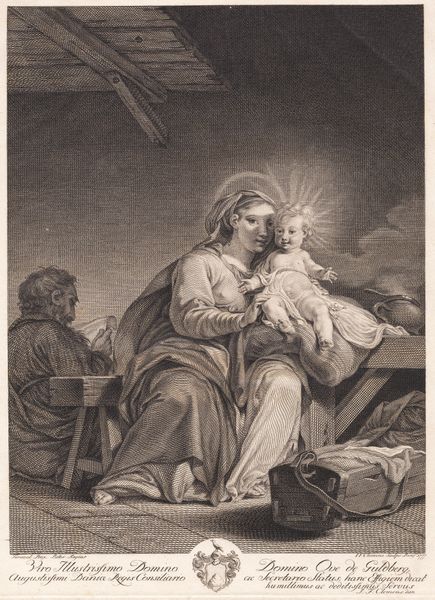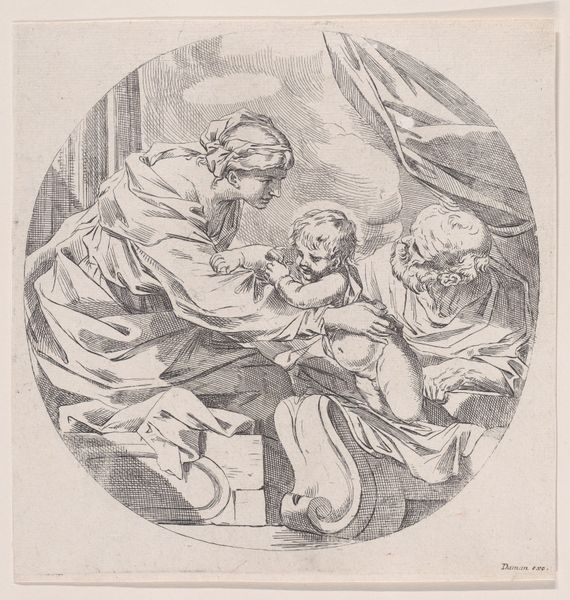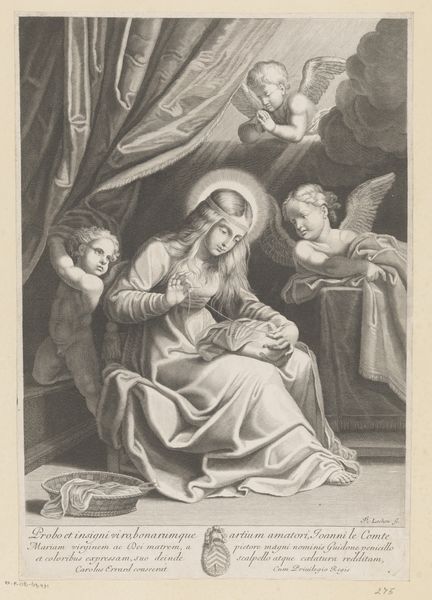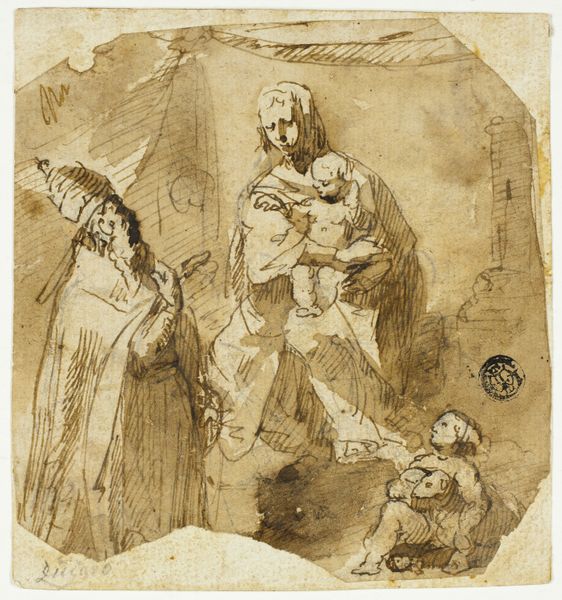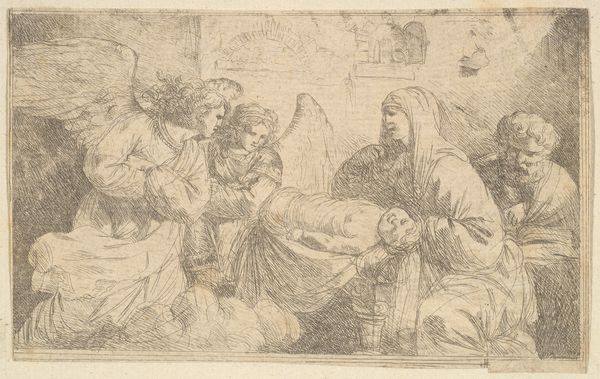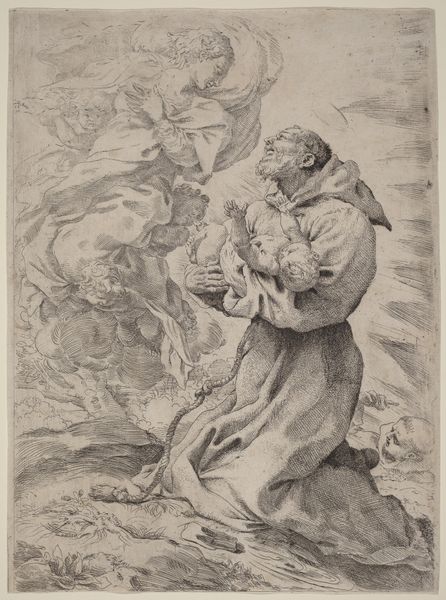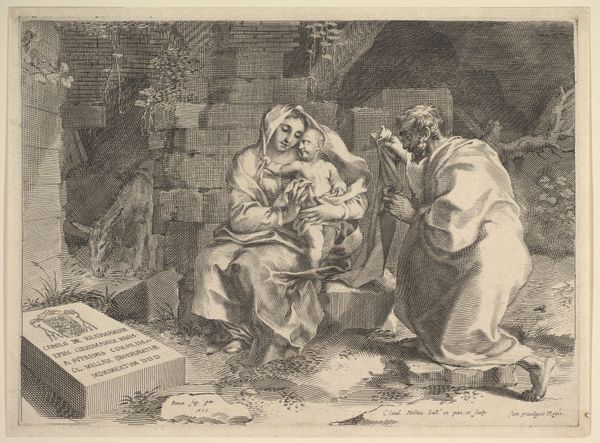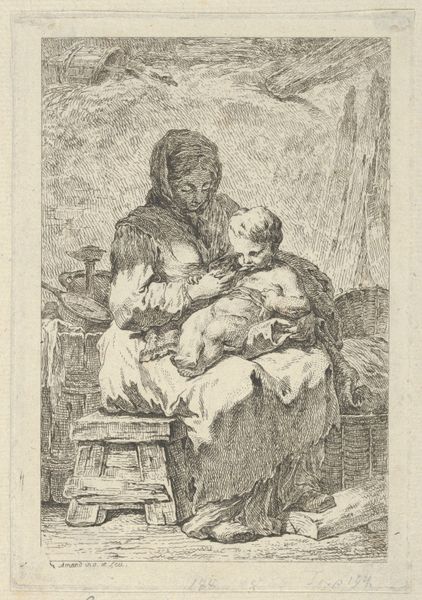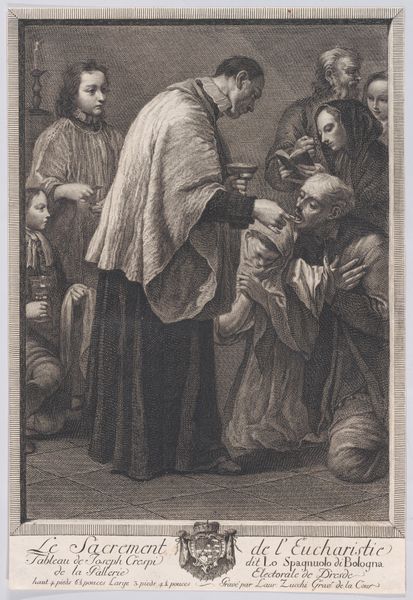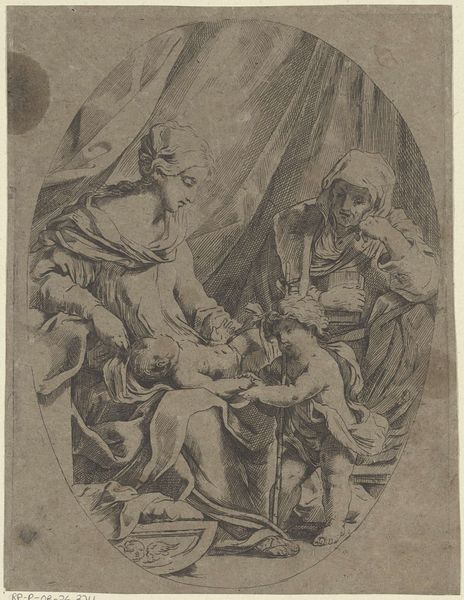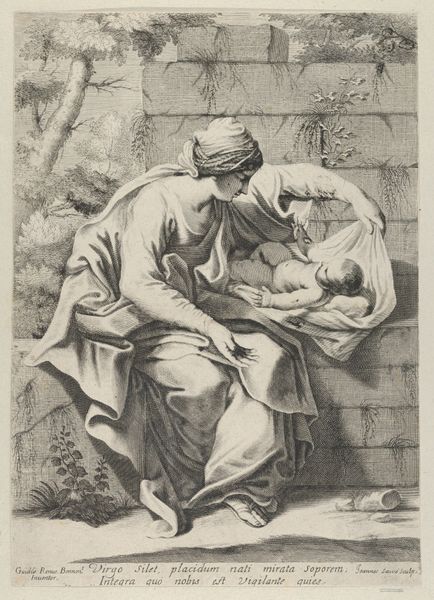
drawing, print, engraving
#
drawing
#
baroque
# print
#
figuration
#
history-painting
#
engraving
Dimensions: sheet: 9 1/2 x 13 5/8 in. (24.2 x 34.6 cm)
Copyright: Public Domain
Editor: Here we have Claude Mellan's "Holy Family," a baroque engraving, likely made sometime between 1598 and 1688. The mood strikes me as incredibly solemn, even melancholic. What do you see in this piece, considering its historical context? Curator: Mellan, known for his technical virtuosity with the burin, offers us more than just a religious scene; it’s a complex visual argument steeped in the socio-political climate of its time. How do you interpret the unusual framing devices he employs, the little vignettes surrounding the central Holy Family? Editor: I hadn’t considered the framing elements in much depth. They seem like little side notes—perhaps other figures from religious stories? Curator: Exactly! Think about it this way: Baroque art served powerful institutions like the Church. Mellan's piece visually reinforces doctrines. He places the Holy Family within these little historical windows showing different stages and other elements of Jesus Christ. Are there, then, overt political or religious implications to this arrangement of figures that you can discern? Editor: Maybe it emphasizes the lineage and purpose of Jesus? That he was destined to play the role in those various "vignettes" to begin with? I mean, putting him in that sort of predestined role would underscore the importance of his purpose from birth... Curator: Precisely. Moreover, it implicitly validates the power structures associated with this history, with these specific symbols. And think about who commissioned or purchased works like this! Mellan uses this intricate engraving technique not merely to display his skill but also to publicly advocate particular ideologies of his period, no? Editor: That makes so much sense! I was focused on the technique, but missed how that technique was used to perpetuate these ideals. Curator: It is quite common, this tendency to look away from these underlying socio-political influences. This is what makes art history such a great pursuit! It causes us to stop, and reflect.
Comments
No comments
Be the first to comment and join the conversation on the ultimate creative platform.

